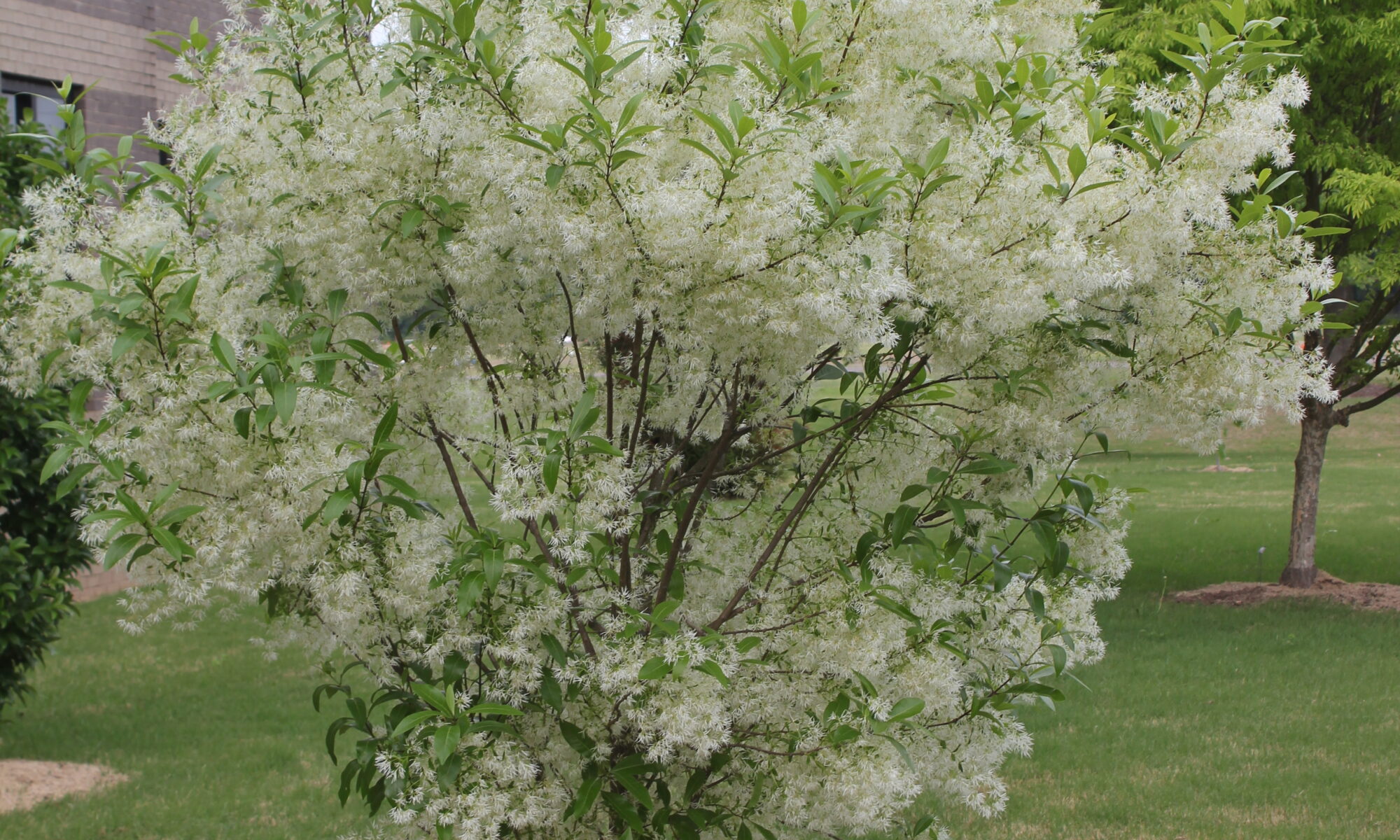
UT Gardens’ January Plant of the Month
Submitted by David Hamilton, Horticulturist, UT Gardens, Knoxville
Happy New Year! As we begin settling into the new year amid the doldrums of winter, now is the time serious gardeners anticipate spring – when the days get longer and the garden will once again regain its color. With so many annuals, perennials, shrubs and trees blooming in spring and grabbing our attention, don’t overlook the American fringetree (Chionanthus virginicus). Not to be confused with the Chinese fringetree (Chionanthus retusus), this elegant native tree with its beautiful, white, fleecy flowers blooms mid to late spring. The flower clusters are said to resemble an old man’s beard, which appropriately enough, is another common name for this species.
The radiant white glow of the flowers is soon joined by the emergence of rich green, elliptical leaves that grow to 3- to 8-inches each and become more prominent as the flowers fade away. It’s a beautiful transition that is well suited for summer greenery in parks and gardens. Plants are either male or female. The female produces dark blue half-inch to two-thirds-inch olive shaped fruits that birds relish. Because most American fringetrees on the market are grown from seed and sold before maturity, the best chance of getting fruit, if desired, is to plant four or more. If having only flowers is the goal, there are a few male cultivars available, but these can be difficult to find.
This tree can be grown as a shrub or, if pruned correctly, a gracefully handsome tree. It can grow up to 20 feet with beautiful light gray bark that looks amazing contrasted with its spring canopy. Because of its relatively small size, fringetree is an ideal choice for a specimen plant in urban or suburban landscape or for use in parking lots or other confined areas.
American fringetree prefers deep, rich acidic soils, but is tolerant of drought and shade so it can be grown in many different environments. It is also tolerant of most pests and diseases, although recently there are signs pointing to issues with ambrosia beetle. Fortunately, it seems to still be putting up the good fight!
If you’re interested in seeing this showstopper, visit the University of Tennessee Gardens in Knoxville or Jackson. In Knoxville, you can see fringetree in the garden and growing in parking lot islands. Jackson has a collection of nine different cultivars representing both American and Chinese species growing on the south side of the office building. They are all thriving and are well maintained. If you desire one for your own garden, you won’t be disappointed! Feel free to stop by any time with questions about the American fringetree!
The UT Gardens includes plant collections located in Knoxville, Crossville and Jackson, Tennessee. Designated as the official botanical garden for the State of Tennessee, the UT Gardens are part of the UT Institute of Agriculture. The Gardens’ mission is to foster appreciation, education and stewardship of plants through garden displays, educational programs and research trials. The Gardens are open during all seasons and free to the public.